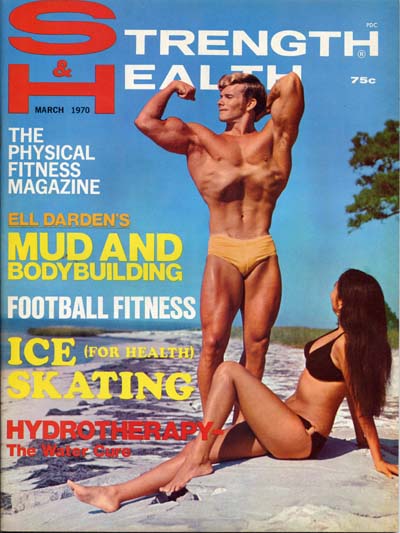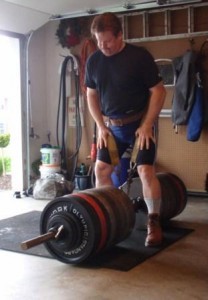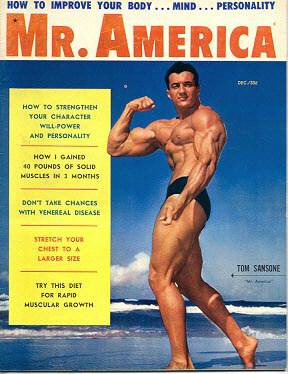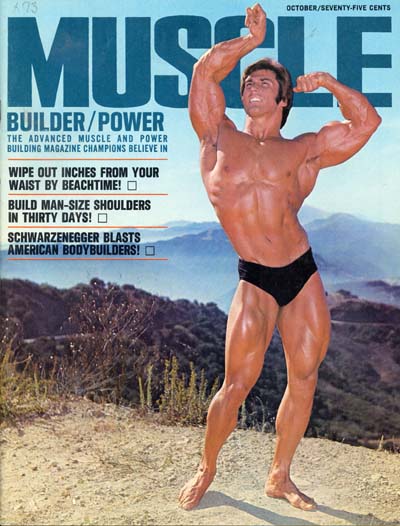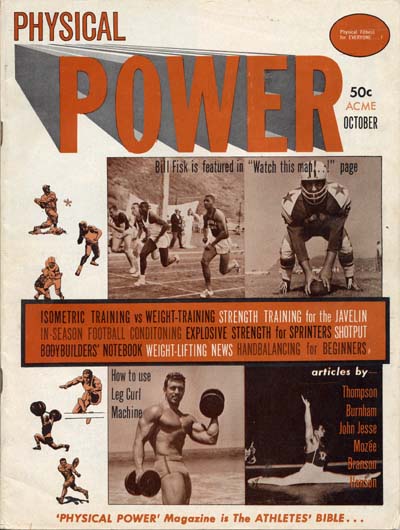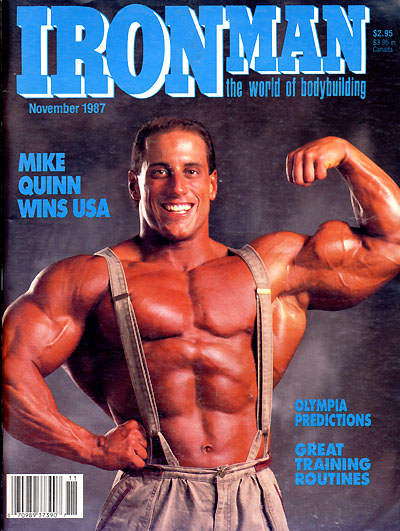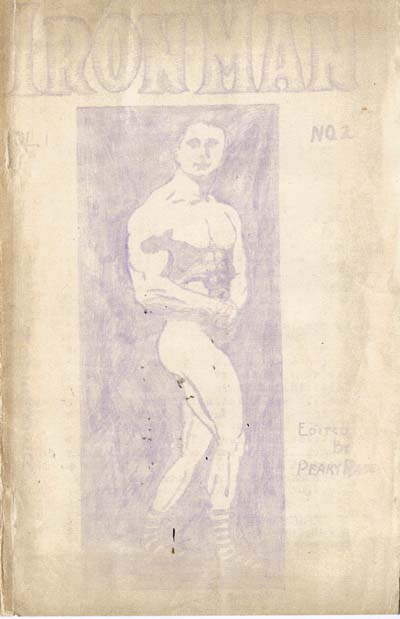Article Courtesy of Liam Tweed
Anyone can bodybuild, but in the strictest sense, only a very select few can ever earn the distinction and honor of being designated a bodybuilder. On the scroll of greats which includes Schwarzenegger, Zane, Corney, Robinson, Grimek, and Coe, there is a space which destiny has left blank. In recent months another name has been penciled in, but the months ahead will see it etched with the force of hammer hitting steel. That name is John DeFendis.
In the years I've been associated with bodybuilding, I've never been more impressed by anyone. You can be awed by watching a skinny kid grow into a monster. You can be awed by his definition, size, cuts, by his superior posing or his perfect symmetry, but that's the shell only. It's the core that makes the man and if he is rotten inside he will wither and perish. However, if he is strong of will and purpose, respectful, considerate of others and honest with himself, then he will mature, prosper, and succeed in all things.
This is John DeFendis. This is the young man who is destined to become the newest and greatest sensation. He will surely rise to the apex in Physique. This is the young man I've grown to respect and admire. This is the young man I've gotten to know and would also like for you to know. He's a very special person and will be in the spotlight from now on.
![]()
![]()
"I've always wanted to be the best at something. I started lifting weights when I was 13 to get bigger and stronger. I was 5'0" and weighed 100 pounds at the time. I was always thick-boned, but thin. My brother, Anthony, used to beat the hell out of me. He'd get me down on the ground, pin my arms, spit on my head, and beat me up until I'd buy him an ice cream. I tried my hand at wrestling and baseball and did well, but Anthony was still too good for me. In fact, he was an All-American wrestler in college. It took me six years to find out that instead of trying to equal or surpass his accomplishments (I did bring home trophies and even won a college scholarship for wrestling), I could really excel in something else.
"In high school I would to into the weight room and watch the big guys lift their heavy weights. Wow, how I wished I could do that too. I was always impressed with strength and I had been training for three years at home, so I had some pretty good size myself. But I really didn't know what I was doing. In tenth grade, my father brought home a magazine and there was an article on Dave Draper. I was impressed! I did everything exactly as he did. I would come home from school and spend a couple of hours each day all alone in the basement.
"All through the summer I lifted. When September came, I had a totally different body. I returned to school and everyone was impressed. I was happy and that's when I really got the push to continue weight training. For a while it was great when someone asked me 'Do you lift weights?' But later when they'd ask me, I'd get mad and say, 'No. I play basketball and do track.' That really confused them. I continued to lift to get bigger, and the more people noticed, the harder I trained.
"I graduated from high school at 17. By then I had accumulated about 400-500 pounds of weights, a bench, a chin bar and some springs. That summer I moved into the garage and set up my little gym. My brother kept telling me about a friend of his named Dave Spector who was into bodybuilding. One day, Dave pulled into the driveway. He was big and I was stunned when he invited me down the next day to train with him. That was in August of '76.
"I was working full time in my brother's delicatessen. When September came, I went to a college nearby. After a semester I decided that college might be great for some, but it wasn't for me. By this time, I was dreaming, eating, and sleeping bodybuilding. I continued to train with Dave at the Olympic Health Club regularly. He told me that in six months I could be the second best guy in the gym, but he would be the best. That sparked something in me and I was determined to one day surpass him.
"Because I was again working full time for my brother, I had little time to train at the club in the evening. So I took most of my savings and spent between $2,000 and $3,000 setting up my basement gym better. I bought an Olympic set, incline and behind-the-neck benches, curling machine, Universal leg machine, ab board, hack squat, dipping bar, and a few other pieces.
"I continued to train at night, alone, or with some friends. Their push was good but not enough. For starting out in bodybuilding, home training is great, but the knowledge in the gym is something you cannot get at home. You need to have people around you doing the same thing. You can't learn everything from books. So I began to train both at home and at the gym. I was making progress but nothing substantial.
"In January of 1977 I entered my first contest, the Teenage Suburban in Orange, New Jersey. My friend, Bobby Green, helped me with my posing and he must have done a good job as I got some applause. Looking at the photo you took, Bob, I can tell that my best bodypart was my mustache! Actually it was my back. I was one of those skinny geeks who wear a loose bathing suit too high on the side. I couldn't find my Bermuda shorts so I wore the trunks. The way my legs looked then, I would have been better off wearing pants! I didn't do very well in the contest. There were four guys in my height class and all three placed ahead of me.
"After this big victory, I was psyched to train for the Mets (AAU Metropolitan Association) two weeks later. I was 5'8" and now weighed 168. I took second in the Teenage and placed fifth in the Open. I was happy with that, and though I was a star. I even had a victory party. I really hadn't made much in the way of gains those past two weeks, what really helped was that the competition was weaker.
"After the Mets I took three months off from training. I was working 80 hours a week so that I could get married. Remember, I was all of 18, pushing 19. My fiance and I had a long talk. We decided that there was still much for both of us to accomplish so we broke our engagement.
"I began training again in May. There were only six short weeks to get ready for the 1977 Teenage America. I trained really hard six days a week, 18-20 sets for each bodypart. I was doing the same routine for the Teenage America that I did for the Mets. I just didn't know any better.
"Just before the contest I went to see Tony Pandolfo. He spent over three hours working on my posing. What a difference it made! For the first time I felt I could pose. Tony helped me immensely, and I credit my subsequent success in posing to Tony's influence.
"Before the Teenage America, Denie came to the gym to take some shots of me for an article which later appeared in the August, 1978 issue of Muscle Training Illustrated. I dropped from 188 to 168 and looked like a drowned pigeon."
I had remembered John from the Mets several months earlier, but the first time I actually spoke with him was a week before the Teenage America. He was sitting in the audience watching the prejudging of Chris Devin's Pro Cup. The mustache was gone and his hair was neatly styled, sun-bleached and groomed. He looked good and hard, but not very talkative. When I asked him how he looked he said briskly, "You'll see next week." When I asked to see his arm, he pulled it away saying, "Get out of here. Don't touch my arm. You'll see it at the contest."
John and I both chuckle about this incident today. He was uptight from dieting for the impending contest and didn't know that I was in the sport. Just looking at him, I had the vibrations that he would be good, real good. One day soon I knew that I would be doing a write-up on him. But what a beginning!
"I traveled up to Boston the next week for the Teenage America and really thought I was going to win it. I went with my whole rooting section, consisting of my girl, Annmarie, my parents, grandma and brother. I went into the contest at 170, two pounds heavier than at the Mets. By this time I had some thigh cuts and better lines. I was a Frank Zane with no muscle.
"I was really sucked-out. One of the so-called pros told me to eat two pounds of chocolate the night before (for carbs) to bring out vascularity. I lost six pounds in the bathroom that night, and the next day when I woke up I had no veins, no cuts, and no muscle! I did very well to have placed ninth in my height class, beating out a couple of swimmers.
"Three weeks later I went down to Georgia for the Teenage USA which Doc Neely was holding. I took fifth in my height class. I was on a hot streak. I went to Boston and came home with nothing and went to Atlanta and came back with nothing. I was discouraged, but determined to grow and take the '78 Mets if it killed me. I still felt that I had the potential to be really good, and I still loved the sport."
John did have the potential. The basic foundation was there. He was only just beginning to show signs of maturation and greatness; at least I thought so. I phoned him after his return to Georgia to get an interview. I intended to feature his as a Rising Star in my column which was then appearing in The American Body Builder. It was the first time he had appeared in print.
"Six months remained until the Mets. I trained really hard (six days a week) from September until mid-October. Then, I suddenly realized that if I was going to win the Mets, I could only do so by training with someone better than me, someone who really know training. That's when I dediced to go over to Steve Michalik's Mr America Gym and train under his supervision.
"Steve put me on a very vigorous training program. I had let myself run down and I contracted a very bad strep/tonsillitis infection. I've had problems with this in the past, but this time my throat closed completely. I was running a 104 degree temperature, and was hospitalized for two weeks in mid-December. I went into the hospital at 204 pounds, looking pretty decent. I got out two days before Christmas at 184, smooth, and looking like 'poppin fresh dough.' I figured my chances were over.
"I went back to training in my basement. I had eight weeks for the Mets, but there was also another contest at the end of January - the Teenage Suburban. I wanted to enter it, but 10 days before the contest my temperature shot up, my throat closed, and I was back in the hospital.
"Taking these contests meant a lot to me and I did not want to blow them. I called up Tony Pandolfo and he told me to keep pumping and flexing all my bodyparts whenever I could to keep up the muscle tone. I was doing 500 situps a day with the intravenous needle still in my arm. It popped out two or three times and the nurses had to re-jab me. It was painful but I wanted to win. The doctors thought I was crazy, but they helped me as best as they could.
"I got out one week before the Suburban. That whole week I trained like a demon, but I was still smooth from all the sugar in me. I took the height class but lost the overall to Francis Meeter. I really thought I had won. I thought that if I couldn't beat this 17 year old kid, then how could I beat Dave Spector? Only four weeks remained.
"I continued to train hard and three weeks later flew to Georgia where I won the Teenage Atlantic States. I took the overall and every bodypart but abs. My confidence was returning. Spector also flew down. He won the Open.
"February 25th finally arrived, and with it, the Mets. I entered both the Junior (teenage) and Senior divisions. I was elated winning the Junior, but when they announced me as the winner of the Senior, it was an unbelievable feeling. All I could think as I stood on the platform accepting my trophy was that I accomplished what I set out to do. Winning this event meant more to me than anything ever before. After everything I'd been through, this was a big payoff."
Two days after the Mets, I received a call from John. "Guess what," the voice croaked. "I'm back in the hospital. They decided to remove my tonsils once the infection and temperature subside." What a lucky break for John this didn't happen two days earlier!
"After the Mets I took two months off from training. My body needed it. I went from 174 to 212. I looked awful but needed the rest. I went back to Steve's gym because I realized that if it were not for his coaching, I might not have won.
In October, my legs were unshapely. All I was doing was squats and extensions. Steve taught me to use extensions, leg press, squats, hack squats, lunges, cycling, and supersetting. He helped burn in the shape and cuts. Even though I didn't train at Steve's just before the Mets, he taught me what to do in my basement gym.
John DeFendis talking about Steve Michalik, training, and the gym, here:
"I figured that he could help me improve even more; though he often drives me into the ground. Soon, I began to build up an immunity to his insane training routines as my stamina and strength increased.
"My whole body was smooth and small when I returned to training, but in one month's time it began to change. I was getting bigger and more muscular. The change was incredible. Each day I trained under Steve I learned something new. In fact, I am still learning. Just a turn of the wrist, or bending your knees a little can make a big difference and give a different tension and movement.
"I believe that Steve Michalik is he greatest person to train under because he is a perfectionist, like me. I'm never entirely happy with myself, and I guess that's what leads you to greatness. It's the guys that are too happy or contented with themselves that stop growing."
Last May, John turned 20. He missed out on the '78 Teenage America by eight weeks. I feel that had he been eligible, he would have won, thus becoming the most sensational Teenage America since Casey Viator. But . . .
"I had next planned to enter the AAU Apollo in October, and had begun training intensively eight weeks earlier. I was doing 40-60 sets per bodypart, training 6 days a week, maintaining a strict diet, and taking in plenty of vitamin and mineral supplements. I was really looking good within three weeks, so I decided to enter the AAU Gotham on September 16th. If all went well it was my plan to hit the AAU Region 1 the next day.
"Steve drove me into the ground. I'd train at seven in the morning (for about three hours), go home, and then be in a coma for the next six hours. After that there was work. It was very tough. I would do arms, then legs. He would rush me to the nearby track where he'd start screaming at me until I completed my laps. There was no way I was going to slow down because he's a madman, but also I knew he was busting his ass for me!
"Eight pounds of chicken a day. I wish I had Frank Purdue as a relative! Six weeks on broiled chicken breasts with diet soda and supplements, and then two more on boiled chicken and supplements, this time minus everything but water. My only consumption was one-half cantaloupe after training. My energy was low, but this program did the trick. Like Vince Lombardi said . . .
"I came into the Gotham at 194 ripped. There were about 22 good contestants; one very good one was Derek Prescod. I took my height class, the overall, best legs, abs, poser, back, and most muscular. Everything but chest and arms. I went home and carbed up. My energy level was getting high, and I remember asking you with every mouthful, 'Bob, am I getting smooth? Will my cuts disappear?' All I remember you saying is, 'No problem. You'll be bigger and more cut tomorrow!' And I was!
"The next day we all traveled up to Springfield, Massachusetts for the Region 1. I went in at 196, more cut and more vascular, the best I'd ever been. I took the contest and four more trophies. I couldn't hold another four weeks for the Apollo. I was afraid I'd burn out. So I started to eat, relax, and grow again. My body wanted to grow! I'm not holding at 212 and still training heavy. In March I'll begin training for the Colonial America, and then I hope to enter the 1979 Mr. USA and America in the summer.
"As you can see, our training routine (Steve's mine) is totally opposite the Mentzer routine. Instead of doing 4-6 sets per bodypart, we do 40-60. It works for both of us. I can afford to take a one week layoff every so often because four days back on the routine will burn off any accumulated fat. Also, I try to eat good food, but I do binge once in a while. I really enjoy ice cream and pizza.
"I don't smoke and I don't drink. To relax, I enjoy reading or listening to the music of Elton John or other soft rock. A good movie will give me the chance to unwind, and I enjoy the company of my friends. Basically, I like the quiet life. I want bodybuilding to be my future. I sincerely believe that I can go somewhere in this sport. If I didn't think I could be a Mr. America, I would not be doing this. I had a few doubts before the Gotham and Region 1, but after all 11 trophies in one weekend - no shot!
"I hope to get married after I win the America. I want my wife to have the best I can give her. My parents gave me the best, and I would like my wife and children to have the same. I think I've got the best girl in Annmarie. We've been together for over two years. She's understanding, not demanding, and she sacrifices much of her time and interests for me. I could ask for none better.
"I've met a lot of great people in the sport so far, far more than I ever dreamed possible. There are so many that I just can't begin to express my thanks and appreciation. I hope to repay their faith, confidence, and all the time and effort they have put into me by winning the America one day soon."
As I said in the beginning, John DeFendis is a very special person, and after reading this story I'm sure you will agree. This is his story. It is written in the first person and not the third because I wanted you to get a true insight into the complete individual; not just John DeFendis the bodybuilder. For only in this way could I convey his sense of humor, sincerity, appreciation for others, and the determination that will drive him to be the very best in bodybuilding.
Tony Pandolfo recently paid tribute to John by commenting, "John DeFendis, aside from being a fine bodybuilder is a fine human being. I expect to see him win the America within the next two years. His potential is fantastic. He looks good, and he's an excellent poser. He has great symmetry, skin tone, and the determination necessary to become a winner. He's also respectful and considerate in spite of his success. He shows a great deal of interest in others and always tried to give advice and assistance. I think that John's a good man for bodybuilding. He's got as much, if not more potential than anyone I've ever seen. It's unbelievable, really. There is no chance why he can't go all the way.
TRAINING ROUTINE
Abs: six days a week -
Roman Chair, 2 x 100 reps
Incline Situp, 2 x 50.
Calves: six days a week -
Standing Calf Raise, 5 sets
Seated Calf Raise, 5 sets
Standing Bodyweight Calf Raises for shape.
Day One: Chest/Back/Biceps
Day Two: Shoulders/Legs/Triceps
All exercises to failure including forced reps and negatives.
Day One:
Chest - 50 sets total, 5 sets per exercise.
Cable Crossover
Dumbbell Flye
Pec Deck
Inclines
Flat Bench to Neck
Declines
Single Arm Alternate Cable Pullover
Dumbbell Pullover
Dumbbell Incline Flye
Back - 60 sets total, 5 sets per exercise.
Cable Pulldown to Front on Angle
Cable Pulldown to Back of Neck
Cable Pulldown to Chest from Overhead
Seated Cable Row (straps)
Reverse Grip Pulldown (leaning back)
Seated Cable Row (different handle)
Standing Straight Arm Pulldown (close grip)
Pulldown Machine (wide grip bar)
Nautilus Pullover
Cable Rear Laterals (bent over)
Bentover Barbell Row
Biceps - 40 sets total, 5 per exercise.
Single Arm DB Preacher Curl
superset with
One Arm Dumbbell Curl
Standing Barbell Curl
superset with
Bentover Barbell Curl (barbell concentration curl)
Cable Curl (seated on floor)
Machine Preacher Curl
superset with
Nautilus Machine Curl
Lying Down Pulley Concentration Curl
Day Two:
Shoulders - 55 sets total, 5 per exercise.
Nautilus Lateral Raise Machine
Dumbbell Lateral
Pulley Laterals on Cable Crossover
Barbell Behind the Neck Press (pyramid up to 150 lbs.)
Barbell Behind the Neck Press (150 x 5 sets)
Nautilus Behind the Neck Press
Nautilus Rear Deltoid
Dumbbell Rear Lateral (flat bench)
Pulley Rear Lateral
Shrugs (in front)
Shrugs (behind body)
Triceps - 45 sets, 5 per exercise
Triceps Pressdown (angle bar)
Triceps Pressdown (straight bar)
Triceps Pressdown (Nautilus Close Grip)
Cable French Press
Rope Pull (top setting of crossover machine)
Rope Pull (bottom of crossover machine)
Close Grip Dips
Wide Grip Dips
Reverse Grip Behind the Neck Pressdown
Legs 55 sets total, 5 per exercise.
Leg Curl
Leg Extension (Nautilus Multi-Leg)
Leg Extension (Nautilus Extension)
Leg Extension (Leg Extension Table)
Leg Press
Leg Press Machine
Ducks (leg press with toes pointing out)
Strict Squats on Machine (2 second pause at bottom)
Squats on Machine
Hack Squats
Regular Squats
Running - total of 1.5 miles, within 15 minutes after squatting. Jog 2 laps, sprint 1 lap, rest 30 seconds, repeat 3 times
COLLAPSE.
There's drop sets on a lot of this. Rest pause. Stripping weight with no rest, etc.



